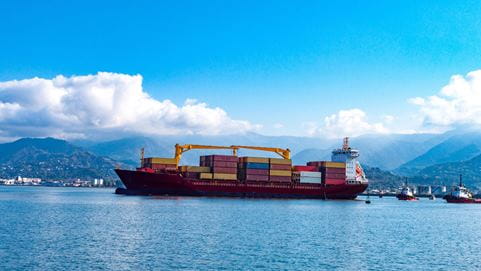Navigating new waters: USTR's actions on Chinese-built ships and what it means for our supply chains

Update published April 22, 2025
On April 17, 2025, the U.S. Trade Representative (USTR) announced significant measures to counteract China's dominance in the maritime, logistics, and shipbuilding sectors. Since then, several updates have been made to the initial action, with the most notable being the introduction of a 180-day grace period during which no fees will be charged.
The revised proposal from the USTR now includes a phased implementation of fees, starting at $50 per net ton in October 2025, and increasing to $140 by April 2028. To view the full list of rate changes, refer to the Federal Register.
Other modifications include:- The program will only apply to vessels greater than 4,000 TEU.
- Fees will be assessed per port rotation, rather than individual port calls.
- The fee will apply up to five times per year per vessel.
- Chinese ocean carriers will face higher costs while following the same timeline for implementation and cost increases.
- There will be no fees on bulk commodity exports or ships that arrive in the U.S. empty, nor on voyages in the Great Lakes, Caribbean, and between U.S. territories.
Published April 18, 2025
The U.S. Trade Representative (USTR) has recently concluded that China's practices in the maritime, logistics, and shipbuilding sectors are "unreasonable" and burden or restrict U.S. commerce. This determination, under Section 301 of the Trade Act of 1974, highlights China's significant expansion in these sectors, with its share of global shipbuilding tonnage growing from less than 5% in 1999 to over 50% in 2023, primarily due to state subsidies and preferential treatment for state-owned enterprises. (Source: Reuters)
In response, the USTR has proposed measures including imposing fees on Chinese-built vessels entering U.S. ports, with charges potentially reaching up to $1.5 million per port call. These fees are set to begin on October 14, 2025, and will be calculated based on net tonnage or per container, gradually increasing over three years. (Source: Reuters)
As a logistics provider, we are closely monitoring these developments to understand their implications on global shipping costs, supply chain resilience, and our operations. We are committed to keeping our clients informed and adapting our strategies to ensure continued efficiency and reliability in our services. For more detailed information, you can refer to the USTR's official announcement: (Source: USTR)
Any questions?
Our experts are ready to help. Get in touch and we'll find the solution you need.

